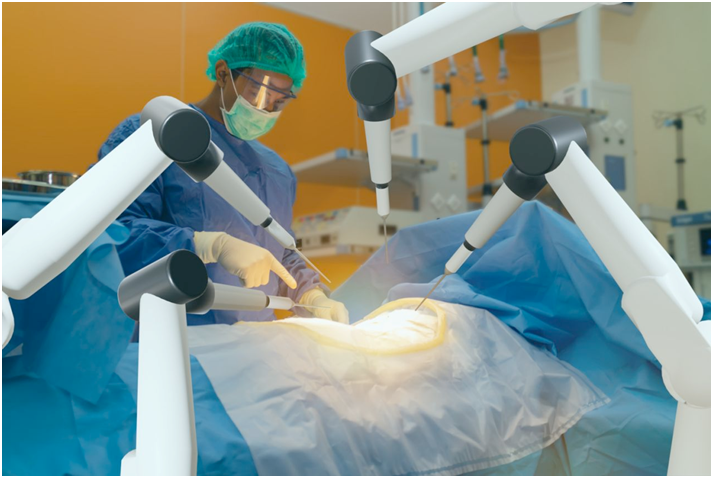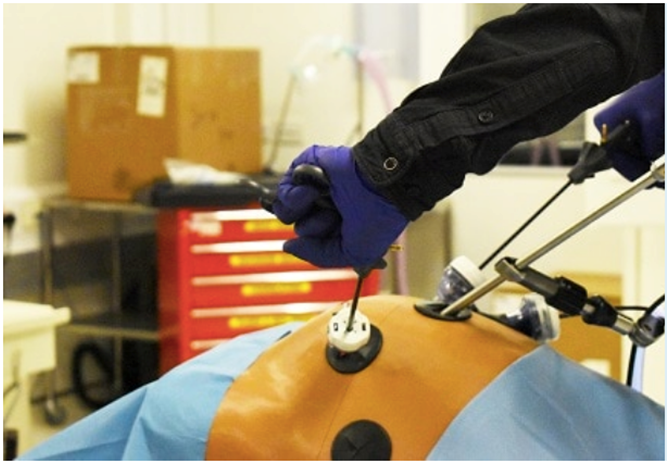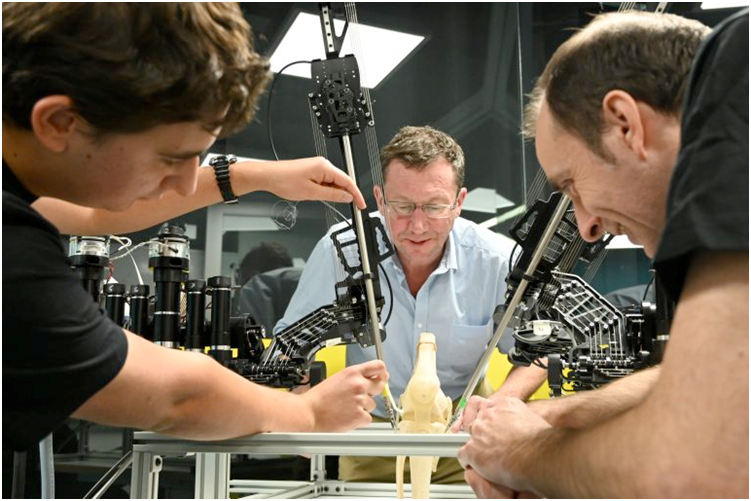
Charles Goulding and Andressa Bonafe explore the rising usage of 3D printing in increasingly automated surgical tasks.
The combination of robotics and artificial intelligence promise to revolutionize healthcare. As recently featured at the Wall Street Journal, a collaborative effort between Intel and the University of California, Berkeley, led to the creation of a semi-supervised AI deep-learning system for automated suturing. By watching surgical videos, Motion2Vec learns about each detail of actual doctors’ movements and then mimics them with high accuracy. Visual learning is a major breakthrough for collaborative robots, especially due to the wealth of training information available. Though still in its early stages, researchers believe that surgical AIs can potentially augment human surgeons’ performance by taking over monotonous and repetitive tasks, such as sutures and debridement.
Additive manufacturing has been applied to various stages of surgical procedures. Renowned doctors and institutions increasingly rely on 3D printed models for preparation and training. This was the case for the 27-hour-long separation of Jadon and Anias McDonald, in which 3D printing was used as a tool for virtual planning during the pre-surgery process, in addition to the creation of skull caps required for each infant.
In the case of robotic surgery simulation, 3D printed models help optimize operator skills in docking and configuring port sites or arm placements, manipulation with end-point instruments, and needle control. As pointed out by UK Company 3D Life Prints, these models enhance laparoscopic skills for grasping, cutting, blunt and sharp dissection, approximation, ligation, electrocautery, and suturing.

The expansion of AI-enabled medical automation creates significant opportunities for the 3D printing industry, which goes far beyond pre-surgical processes. Growing demand for collaborative robots accentuates the need for timely and efficient production of components. In addition to facilitating the development, testing, and manufacturing of such units, 3D printers open the way for unprecedented levels of customization.
In minimally invasive surgery, for instance, the medical team uses small tools attached to a robotic arm, which is controlled through a computer. Currently used instruments tend to be one-size-fits-all solutions, despite the many particularities of human anatomy. Ongoing efforts at the Australian Centre for Robotic Vision use MRI scans to map the unique features of a patient’s knee and subsequently select the most adequate design for modular robots. The patient-specific solution is then 3D printed ahead of the procedure thus augmenting its chances of success.

The Research and Development Tax Credit
R&D tax credits are available to support companies that use 3D printing to advance surgical automation. Enacted in 1981, the now permanent Federal Research and Development (R&D) Tax Credit allows a credit that typically ranges from 4%-7% of eligible spending for new and improved products and processes. Qualified research must meet the following four criteria:
- New or improved products, processes, or software
- Technological in nature
- Elimination of uncertainty
- Process of experimentation
Eligible costs include employee wages, cost of supplies consumed in the R&D process, cost of pre-production testing, US contract research expenses, and certain costs associated with developing a patent.
Conclusion
The application of 3D printing to pre-surgical processes has enabled major improvements in training and simulation of complex procedures. The automation of surgical tasks promises to expand demand for 3D printed components, especially as intelligent, collaborative robots begin to learn from visual data and mimic human doctors with high accuracy. Innovative 3D printing and medical automation companies should take advantage of R&D tax credits as we enter the world of robotic surgeries.
